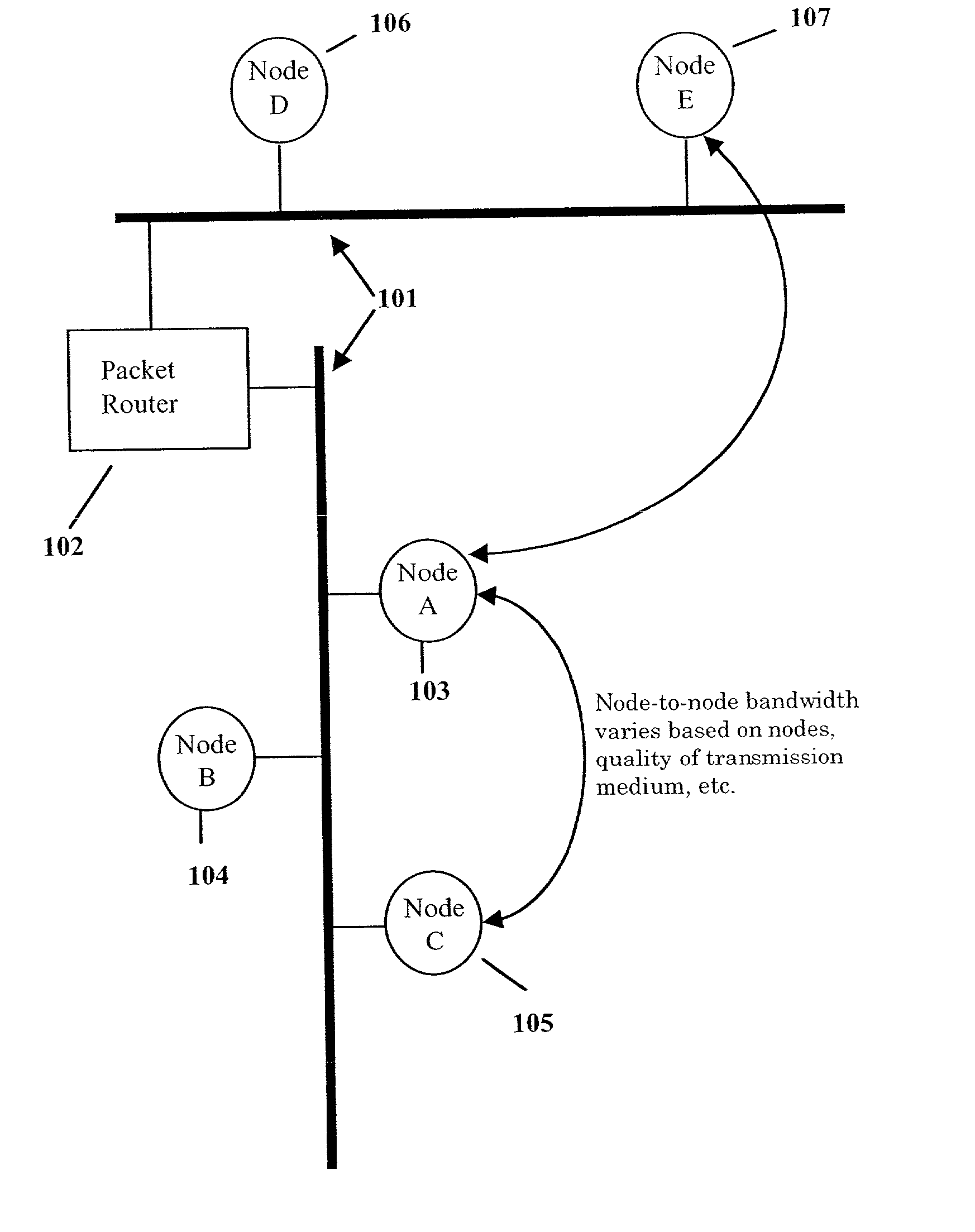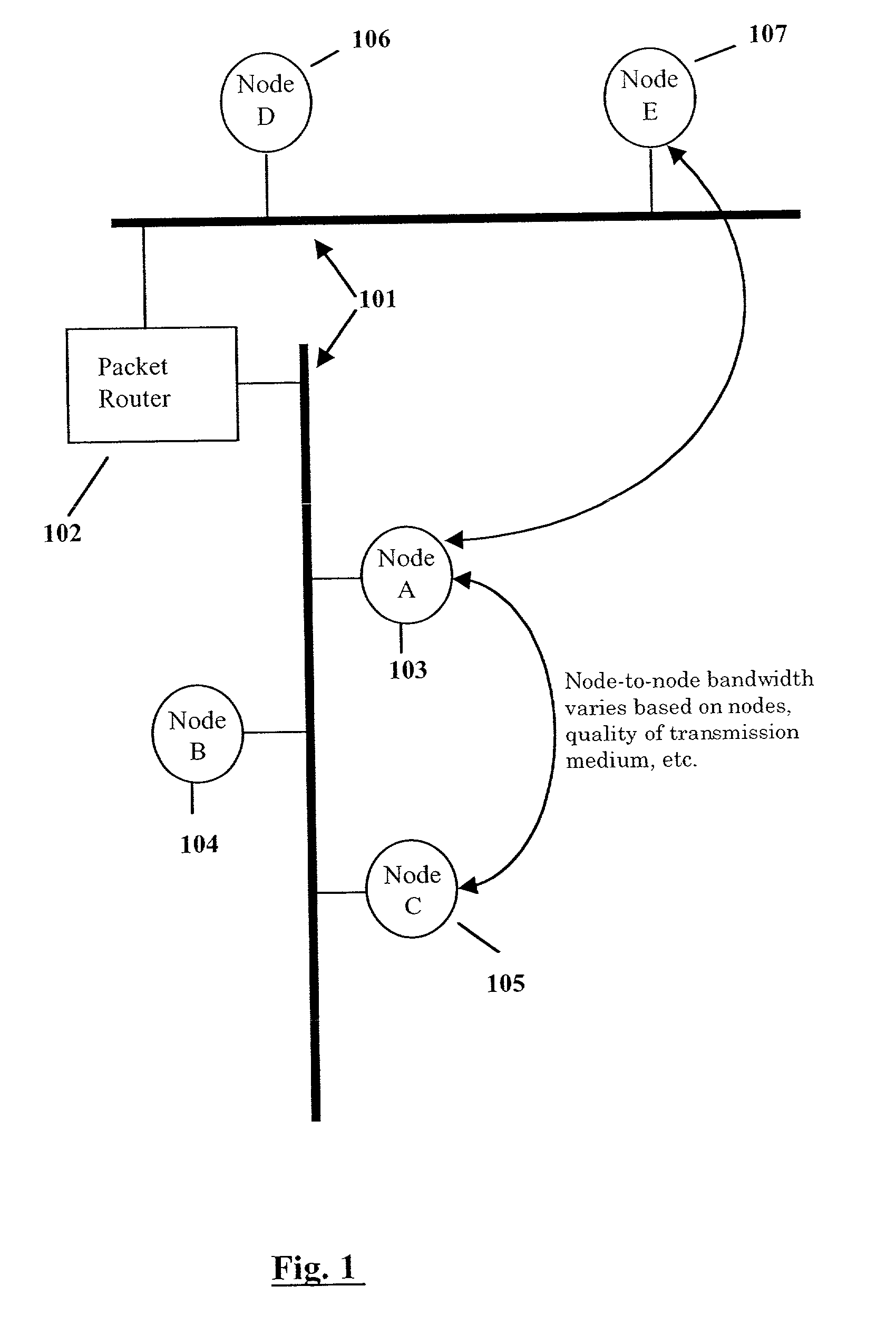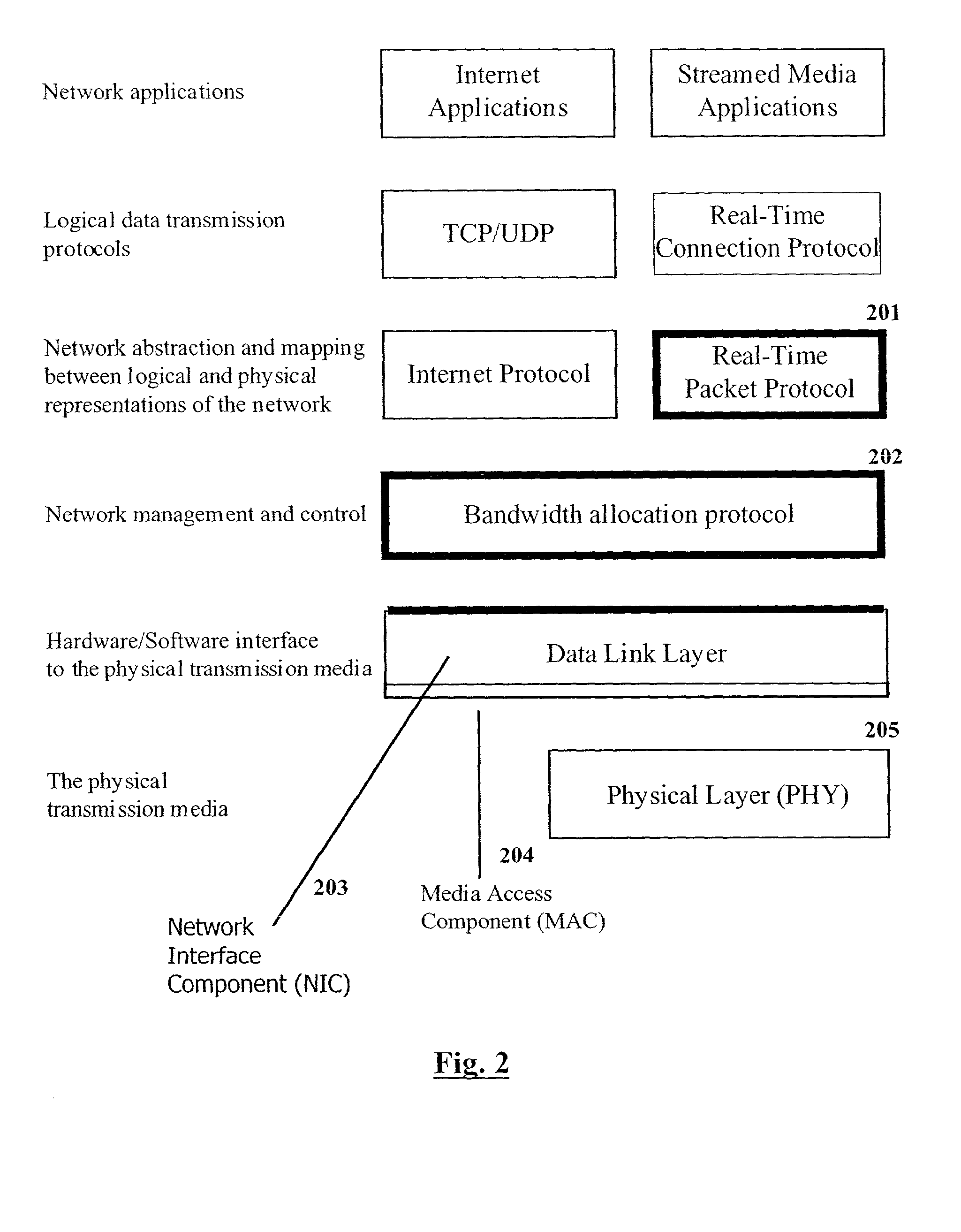Method and apparatus implementing a multimedia digital network
a multimedia digital network and multimedia technology, applied in the field of data communication networks, can solve the problems of inability to describe the maximum bandwidth of the network, inability to implement large buffers, and inability to detect and aurally annoying time-shift between incoming and outgoing streams,
- Summary
- Abstract
- Description
- Claims
- Application Information
AI Technical Summary
Benefits of technology
Problems solved by technology
Method used
Image
Examples
Embodiment Construction
[0106] With respect to the interface between the Network Interface Component (NIC) and software, there is an alternative embodiment of the invention that avoids requiring any changes to the NIC. It assumes that the NIC can be operated in a direct mode, i.e. that commands may be explicitly given to the NIC to transmit a packet or cancel a packet. Thus, the typical ring-buffer structure which allows semi-autonomous operation by the NIC is bypassed. Nearly all NIC interfaces support such operation for diagnostic or real-time control purposes, of which the alternative embodiment is an example.
[0107] A ring-buffer structure is typically used to provide a level of decoupling between NIC operation and host processing, which increases performance by allowing parallel operation of the NIC and the host, and reduces host load by requiring less processing for each packet sent or received. In many instances, especially for lower-cost devices which are dedicated to particular tasks, employing a r...
PUM
 Login to View More
Login to View More Abstract
Description
Claims
Application Information
 Login to View More
Login to View More - R&D
- Intellectual Property
- Life Sciences
- Materials
- Tech Scout
- Unparalleled Data Quality
- Higher Quality Content
- 60% Fewer Hallucinations
Browse by: Latest US Patents, China's latest patents, Technical Efficacy Thesaurus, Application Domain, Technology Topic, Popular Technical Reports.
© 2025 PatSnap. All rights reserved.Legal|Privacy policy|Modern Slavery Act Transparency Statement|Sitemap|About US| Contact US: help@patsnap.com



